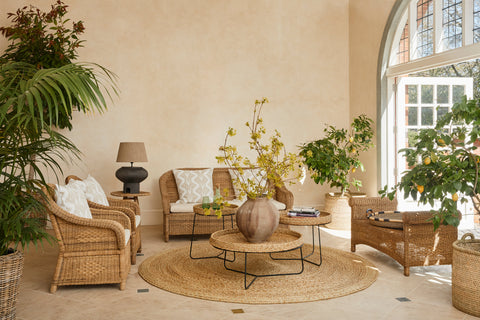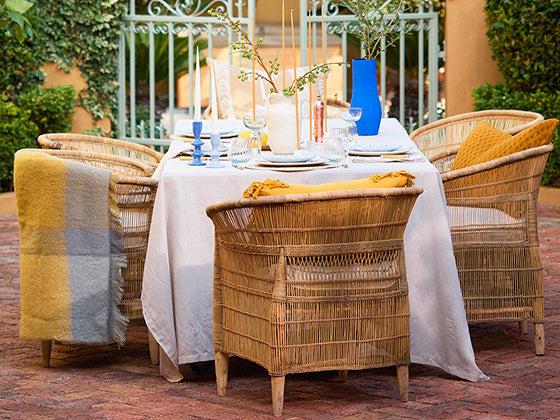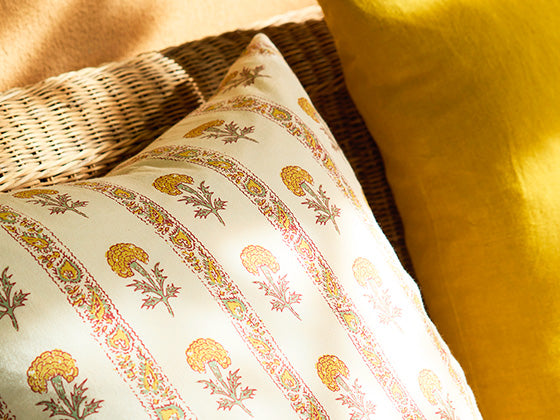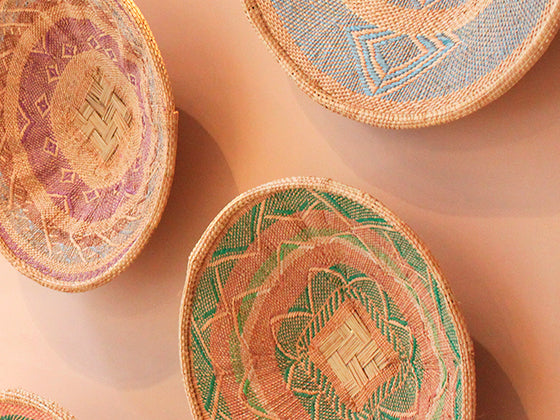
Where does the term 'wabi-sabi' come from?
Loosely translated, "wabi" means simplicity, while "sabi" means 'the beauty in age and use'. It is an ancient Zen Buddhism aesthetic philosophy celebrating the inherently imperfect nature of handmade, or artisan design - it's in the fingerprints left behind on a ceramic piece of art as the clay dries; the drips in the glaze as it is applied by hand or the unique pattern in a hand-woven piece of basketry - that all give an object its own visual handwriting and 'design soul'.
What is a wabi-sabi design aesthetic?
Wabi-sabi should not be mistaken for a maximalist approach of curated curios - it has a considered, pared-back, elegant feel rooted in beautiful, hand-crafted design. Whilst uncluttered, it is far from a stark, minimal look either - but creates a calming, inviting space with carefully chosen pieces that have a story to tell.

5 key design principles of wabi-sabi:
A curated approach
The concept of wabi-sabi has filtered into Western design as a curated aesthetic. Rather than sticking to one era, or tight colour palette it's about the beauty in the collective feel of pieces chosen, or inherited, over time. To help keep it feeling cohesive and considered, try mixing organic textures and materials which will naturally sit together - such as wood, cane, terracotta and grasses. If the foundations of a space are calming and neutral, colour and interest can be brought in through woven accessories, soft furnishings and statement ceramics so as not to overwhelm.
A story to tell
A key principle of wabi-sabi is to fill one's home with pieces that have sentimental value, or a story attached to them. Finds from farflung travels, mixed with heirloom antiques and treasured one-off pieces all give a space a unique quality and will make a space feel like a home.
The joy in the making
Another cornerstone to wabi-sabi design and something fundamental to the Hadeda aesthetic is celebrating the artisan and handmade, over the mass produced. Rather than placing value in uniformity and clean lines, it's about showcasing the craftsmanship and process of how something has been made, rather than just the end result. It's not only about the aesthetic appeal, but of the value placed in heritage craftsmanship and human skill over mechanical efficiency.
Embracing the natural world
Biophillia as a concept has become even more popular over the last year as we have spent more time than ever in our homes and is a key pillar of the Wabi-Sabi philosophy. Merging our outer and inner worlds by bringing nature into the home through organic materials, its about celebrating the uniqueness of the knots in a piece of wood, a vase of hedgerow blooms or a bowl filled with beach-combed treasures. These organic elements embue our homes with all the wellbeing benefits of time spent in nature.
Patina and palette
Wabi-Sabi is also about celebrating the beauty in the visual history and patina that pieces in our home adopt over time, showing well-loved use or exposure to nature that builds a story all of its own - be it a thread-bare rug, well-thumbed books, vertdigris metalwork or moss-covered planter.
Neutral palettes are key to a Wabi-Sabi aesthetic; known for her bright pigmented ceramics, Clementina Van Der Walt's new range this summer is filled with beautiful pastel hues, perfect when pared with sunbleached linens and woven textures.










